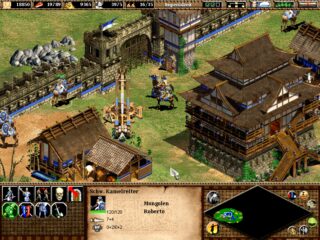The real-time strategy genre, commonly known as RTS, has its roots in the late 1980s, when developers began experimenting with the idea of strategic control in a real-time environment. While not pure RTS by today’s definitions, games like Populous by Bullfrog and Command H.Q. by Dani Bunten introduced several key mechanics: indirect control of units, resource-based progression, and action unfolding in real time rather than turn-based. These early titles laid the conceptual groundwork for what would become a full-fledged genre.
The turning point came in 1992 with Dune II: The Battle For Arrakis by Westwood Studios. This game defined many of the core elements now associated with RTS: base construction, tech trees, resource harvesting, fog of war, and direct unit control in a top-down perspective. Unlike its predecessors, Dune II implemented these features in a cohesive, user-friendly interface, essentially establishing the RTS genre’s identity. The game’s success demonstrated the potential for real-time strategic gameplay and directly influenced a generation of titles.
Around the same time, games like The Settlers offered a different take on real-time strategy. While focused more on economic development and logistics than combat,The Settlers introduced the idea of simulating a functioning economy with autonomous units, adding a layer of depth to the genre. However, the true explosion of the RTS genre occurred with Blizzard’s WarCraft: Orcs & Humans in 1994, and even more so with Warcraft II: Tides Of Darkness in 1995. These titles refined the formula with strong narratives, polished interfaces, and the introduction of multiplayer battles, helping RTS break into the mainstream.
The mid-to-late 1990s saw a golden age of RTS. Westwood returned with Command & Conquer in 1995 and its alternate-history spinoff Command & Conquer: Red Alert in 1996, offering fast-paced combat and iconic full-motion video briefings. Ensemble Studios released Age of Empires in 1997, which blended RTS with historical themes and complex economic systems. Blizzard’s Starcraft raised the bar again in 1998, delivering a science fiction setting with perfectly balanced asymmetrical factions and a legendary campaign. Finally, Age of Empires II: The Age of Kings in 1999 cemented itself as one of the most enduring and beloved RTS titles, praised for its depth, scale, and historical accuracy.
Together, these games defined the mechanics, aesthetics, and ambitions of real-time strategy. They created a framework that still influences the genre today, and their legacy remains strong among players and developers alike.














